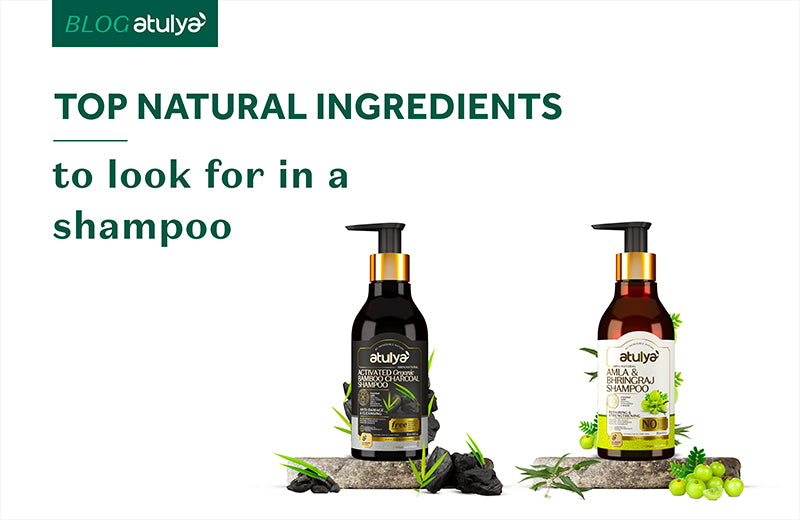Top Natural Ingredients for Dry Skin Relief
Do you find yourself constantly reaching for the lotion bottle, only to be left with dry, flaky skin an hour later? Well, you’re not alone.
Dry skin is a common issue, especially during colder months or in dry climates, and the solution isn’t always another chemical-laden cream. Nature, in all its wisdom, offers powerful, gentle, and effective remedies for parched skin.
Let’s dive into the best ingredients for dry skin that can bring your skin back to life, and stay with us till the end for a simple DIY recipe you can make at home!
Table of Contents
- Shea Butter – The Skin’s Best Friend
- Coconut Oil – Nature’s Moisturizer
- Oatmeal – Not Just for Breakfast
- Avocado – The Hydration Hero
- Aloe Vera – The Cooling Soother
- Honey – The Sweetest Moisturizer
- Jojoba Oil – Skin’s Twin
- Almond Oil – Vitamin E Rich Elixir
- Cucumber – Cool, Calm & Hydrate
- Calendula – The Herbal Healer
- DIY Time: Make Your Own Dry Skin Balm!
- Final Thoughts
- FAQs
1. Shea Butter – The Skin’s Best Friend
Shea butter is extracted from the nuts of the African shea tree and is packed with vitamins A and E, both of which help soothe and moisturise skin. Its natural fatty acids mimic the skin’s own oils, allowing it to absorb quickly and lock in moisture without clogging pores.
How to use:
Apply shea butter directly after a shower while your skin is still damp. Want something fancier? Mix it with coconut oil for a richer body butter. We recommend you try out atulya’s Ultra Shea with Vitamin E body lotion.
Fun Fact: Shea butter also contains natural sun protection (SPF 3–4). It’s not a substitute for sunscreen, but it adds a little boost!
2. Coconut Oil – Nature’s Moisturizer
Coconut oil is a powerhouse when it comes to hydration. Rich in medium-chain fatty acids, especially lauric acid, this dry skin ingredient forms a protective barrier that retains moisture and soothes inflamed, itchy skin.
How to use:
Use organic, unrefined coconut oil as a nightly body moisturiser. You can also use it as a makeup remover or a lip balm – talk about multitasking! If you like, you can try out the best skincare products for dry skin face, like atulya’s coconut & lactic acid body wash.
Pro Tip: If you have acne-prone skin, use it sparingly on your face, as it may clog pores for some skin types.
3. Oatmeal – Not Just for Breakfast
Colloidal oatmeal (finely ground oats) is well known for its anti-inflammatory and skin-soothing properties. It binds to the skin and forms a protective barrier while offering gentle exfoliation and hydration.
How to use:
Add 1 cup of colloidal oatmeal to a warm (not hot) bath and soak for 15–20 minutes. You’ll get out feeling like silk. For spot treatment and dry skincare, mix it with honey and apply it as a face mask.
4. Avocado – The Hydration Hero
Avocados are a good ingredient for sensitive skin, and are full of healthy fats, antioxidants, and vitamins E and C. When applied topically, these nutrients nourish and moisturise skin while supporting collagen production.
How to use:
Mash half an avocado and mix it with a teaspoon of honey. Apply it to your face for 10–15 minutes for an ultra-hydrating mask.
Try This: Eating avocados regularly also supports skin health from the inside out!
5. Aloe Vera – The Cooling Soother
Aloe vera is 99% water and packed with enzymes, vitamins, and minerals. This skincare ingredient soothes irritated or sunburnt skin, reduces redness, and provides a cooling hydration boost.
How to use:
Use pure aloe gel directly from the leaf (or choose a 100% pure bottled version). Apply to dry patches or use as a light moisturiser under a heavier cream. We recommend checking out our aloe vera product range and other dry skin products to enjoy its benefits.
Bonus Tip: Keep aloe vera gel in the fridge for an extra refreshing treat.
6. Honey – The Sweetest Moisturizer
Honey is a natural humectant, meaning it draws moisture from the air into your skin. It’s also antibacterial and rich in antioxidants, which helps prevent irritation while hydrating.
How to use:
Apply raw honey as a face mask (yes, just honey!) for 10 minutes. Rinse with warm water and pat dry. It leaves your skin baby-soft and glowing.
7. Jojoba Oil – Skin’s Twin
Jojoba oil’s chemical structure is remarkably similar to human sebum (the oil our skin naturally produces). This makes it incredibly compatible with skin, helping balance oil production while providing deep hydration.
How to use:
Apply a few drops of jojoba oil on clean skin, either alone or under your regular moisturiser.
Layer Like a Pro: Jojoba oil is an excellent carrier oil. Mix it with essential oils like lavender or chamomile for extra soothing benefits.
8. Almond Oil – Vitamin E Rich Elixir
Almond oil is rich in vitamin E, magnesium, and essential fatty acids, making it a gentle but powerful moisturiser for dry, irritated skin.
How to use:
Massage warm almond oil into your skin after bathing. It's especially good for sensitive areas like under the eyes and around the mouth.
For more relaxation, we recommend adding a tablespoon to your bath water for a nourishing soak.
9. Cucumber – Cool, Calm & Hydrate
Cucumber is high in water content and loaded with antioxidants and vitamin C, helping to soothe, hydrate, and reduce puffiness.
How to use:
Blend cucumber into a juice and mix with aloe vera for a refreshing mist, or place chilled slices on your face for 10 minutes.
Pro Tip: Use a jade roller over cucumber slices for a spa-like experience at home.
10. Calendula – The Herbal Healer
Calendula (marigold) has anti-inflammatory and antifungal properties. It accelerates healing and soothes redness, flakiness, and dry patches. Calendula is deemed safe even for babies and is often used in natural diaper creams!
How to use:
Use calendula-infused oil or creams on dry, sensitive areas. You can also steep dried calendula flowers in oil to create your own DIY balm.
DIY Time: Make Your Own Dry Skin Balm!
To make your own dry skin balm, we’ve listed the detailed steps on how to do it!
Ingredients:
-
2 tbsp shea butter
-
1 tbsp coconut oil
-
1 tsp jojoba oil
-
1 tsp honey
-
Optional: a few drops of lavender essential oil
Instructions:
-
Melt shea butter and coconut oil in a double boiler.
-
Remove from heat and stir in jojoba oil, honey, and essential oil.
-
Pour into a small jar and let it set.
-
Use at night before bed on dry patches, hands, and feet.
To customize it: Swap jojoba for almond oil or add a few drops of chamomile oil for sensitive skin.
Final Thoughts
Dry skin doesn’t need to be a constant battle. By turning to nature’s apothecary and following a daily skincare routine for dry skin, you can restore your skin’s natural glow without harsh chemicals or expensive products.
Whether it’s the buttery smoothness of shea or the soothing touch of aloe, these ingredients are gifts from the earth that can easily make your skin radiant!
FAQs
Q. Are natural ingredients really effective for dry skin?
Ans. Yes! Many natural ingredients like shea butter, coconut oil, and aloe vera are rich in fatty acids, vitamins, and antioxidants that deeply hydrate and nourish the skin.
Q. Can I use natural oils on my face if I have acne-prone skin?
Ans. It depends on the oil. Jojoba oil is great for acne-prone skin because it mimics natural sebum and doesn’t clog pores. However, oils like coconut oil may be comedogenic for some people and should be patch-tested first.
Q. How often should I use natural remedies for dry skin?
Ans. You can use most natural remedies daily, especially after bathing when your skin is still damp. Masks or treatments with ingredients like honey or avocado can be used 1–3 times per week.
Q. Are these remedies safe for children or babies with dry skin?
Ans. Many natural ingredients like shea butter, coconut oil, and calendula are safe for children and even infants. However, it’s always best to consult a paediatrician and do a patch test first.
Q. Are essential oils safe to use for dry skin?
Ans. They can be, but they must be diluted with a carrier oil (like jojoba or almond oil). Never apply essential oils directly to the skin. Also, avoid citrus oils on sun-exposed skin due to photosensitivity.




